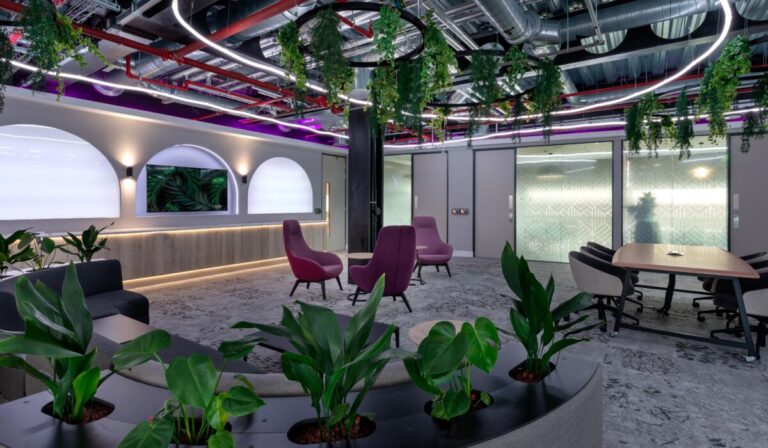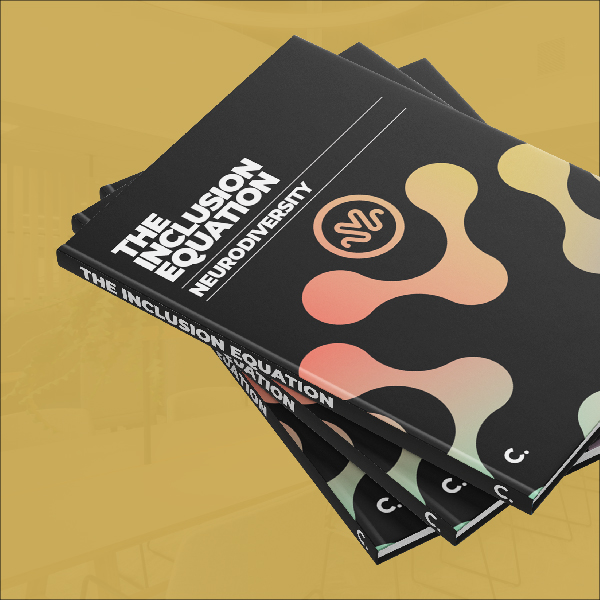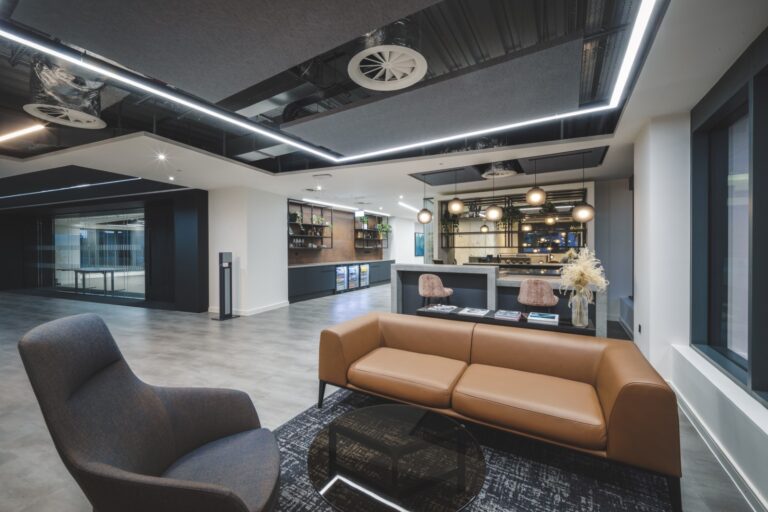
Embracing Neurodiversity in the Workplace
Date
30 April 2024
Read length
5 min
The workplace is a constantly adapting environment, whether that be the rapid rise of remote and hybrid working during Covid or considerations for diversity and inclusion.
Embracing Neurodiversity in the Workplace: A Strategic Imperative for Businesses
The workplace is a constantly adapting environment, whether that be the rapid rise of remote and hybrid working during Covid or considerations for diversity and inclusion.
Businesses are becoming more aware of how diversity and inclusion can benefit their strategic objectives, subsequently flowing through to all elements including leadership, workplace, processes, working practices, recruitment and more.
Neurodiversity covers a broad range of conditions and can impact up to 20% of the workforce, it is imperative that businesses look to support, embrace and ultimately capitalise on the benefits that neurodiversity can bring to the workplace.
Understanding Neurodiversity
What is Neurodiversity?
Neurodiversity is often defined as the variation in neurocognitive function and behaviours between individuals. Harvard Health describes it as “the idea that people experience and interact with the world around them in many different ways”.
The most common conditions tend to be Autism Spectrum Disorder (ASD), Attention Deficit Hyperactivity Disorder (ADHD) and Dyslexia, though it can cover a number of other conditions considered to be within the normal range of variation. We’ve covered each of the main conditions within our Neurodiversity whitepaper as part of The Inclusion Equation series.
As per Harvard Healths’ definition, there a number of considerations that businesses and organisations need to take into account with regards to neurodiversity in the workplace, not only to embrace and support this variation, but also to utilise the benefits that accompany neurodiversity.
Why is it important, especially in the workplace?
Neurodivergent individuals often experience and interact with the world differently from ‘neurotypical’ individuals. For example, someone with ASD might have exceptional memory for detail and an ability to sustain concentration on specific tasks for extended periods, whereas an individual with ADHD might excel in dynamic environments that require rapid problem-solving and adaptability. Embracing these differences can unlock a wealth of untapped potential within the workforce, especially considering the often heightened lateral-thinking, analytical and creative skills associated with neurodiverse individuals.
Alternatively, if businesses do not act on this growing awareness (and adult diagnoses), they may see a portion of their workforce struggle in certain environments. Ultimately, it can be viewed as a missed opportunity or worse, reduced efficiency and output.
The Case for Neurodiversity in the Workplace
Neurodiversity offers exciting opportunities for businesses, utilising specific behaviour traits, abilities and skill sets that can accompany neurodivergence. As per our whitepaper, the medical model frames conditions as impairments or deficits. However, there is considerable upside for supporting and embracing neurodivergence in the workplace.
Problem-Solving and Creativity
The unique perspectives and problem-solving approaches of neurodivergent individuals can lead to breakthrough innovations and creative solutions. For instance, the intense focus and deep-diving capabilities of many ASD individuals can lead to exceptional achievements in roles or projects requiring detailed analytical work.
Diverse Skill Sets and Expertise
Embracing neurodiversity opens the door to a range of skills and talents that can be highly valuable. People with dyslexia, for example, often exhibit strong big picture thinking, observation and strategic skills. Leveraging these diverse abilities can give businesses a competitive edge in strategy and innovation.
Access to a Broader Talent Pool
By actively seeking to include neurodivergent individuals, companies can significantly widen their recruitment pool. This is particularly pertinent in sectors facing skills shortages. Despite their abilities, neurodivergent individuals often face barriers to employment; for example, the ONS reports that only 22% of autistic adults in the UK are in full-time employment, highlighting a pool of underutilised talent.
Strategies for Harnessing Neurodiversity
Solely recognising the need to embrace neurodiversity is only the first step towards truly harnessing the opportunities that these individuals represent. We’ve dived into how businesses can support neurodiversity in a little more detail here, though provided key points below as well for reference:
Recruitment and Onboarding Processes
Businesses can adapt their recruitment processes by offering alternative application processes, such as practical assessments, work trials, or relaxed interviews. Providing clear, straightforward job descriptions and expectations can also help attract neurodivergent applicants.
Creating an Inclusive Work Environment
Adjustments to the workplace can be made, both large and small and can have a significant difference for neurodivergent employees. This can be in the form of a variety of working environments, enabling choice and control to the entire workforce. In this way, we can remove barriers that both neurodivergent and neurotypical individuals may experience as part of the workplace environment.
Investing in Awareness and Training
DE&I awareness has been growing significantly in recent years and we would encourage business to continue on this trajectory. Educating individuals and teams about neurodiversity promotes understanding and acceptance within the team. Training should cover the basics of neurodiversity, the strengths and challenges of neurodivergent individuals, and practical strategies for supporting colleagues.
Providing Support and Mentorship
Establishing mentoring programs or peer support networks can help neurodivergent employees navigate the workplace and develop their careers. Regular check-ins and feedback are essential, as is access to professional development opportunities that are tailored to their unique learning styles and strengths.
Implementing Neurodiversity Initiatives
Creating and actioning neurodiversity initiatives is critical in engaging and utilising this portion of the workforce. As Claremont’s Becky Turner said to Stylist, one of the most important steps is asking colleagues for input in order to create an inclusive workplace. In addition, clear initiatives can set measurable goals and roadmaps for improving this inclusivity.
Final thoughts on embracing neurodiversity in the workplace
It’s evident that neurodiversity is not just a concept to be aware of but an integral part of the evolving landscape of modern workplaces. Businesses stand at the threshold of harnessing an array of unique talents by fostering a culture that embraces the diversity of thought, perspective, and approach brought by individuals with autism, ADHD, and dyslexia.
To delve deeper into practical strategies on creating neurodiversity-supportive environments through intentional office design, the article Supporting and Promoting Neurodiversity in the Workplace offers valuable guidance.
For those ready to take actionable steps, Claremont’s whitepaper, ‘The Inclusion Equation’, is an indispensable resource. It provides a comprehensive look at the benefits of a neurodiverse workforce and lays down a blueprint for integrating these strategies into the fabric of an organisation.
Discover more and join the movement towards a more inclusive and dynamic workplace by reading our whitepaper “The Inclusion Equation.
See how we could help with your new office interior design or office design and build project here
Get in touch
We love nothing better than talking all things workplace and design – got a question, potential project or just need some guidance?
Drop us a note…





